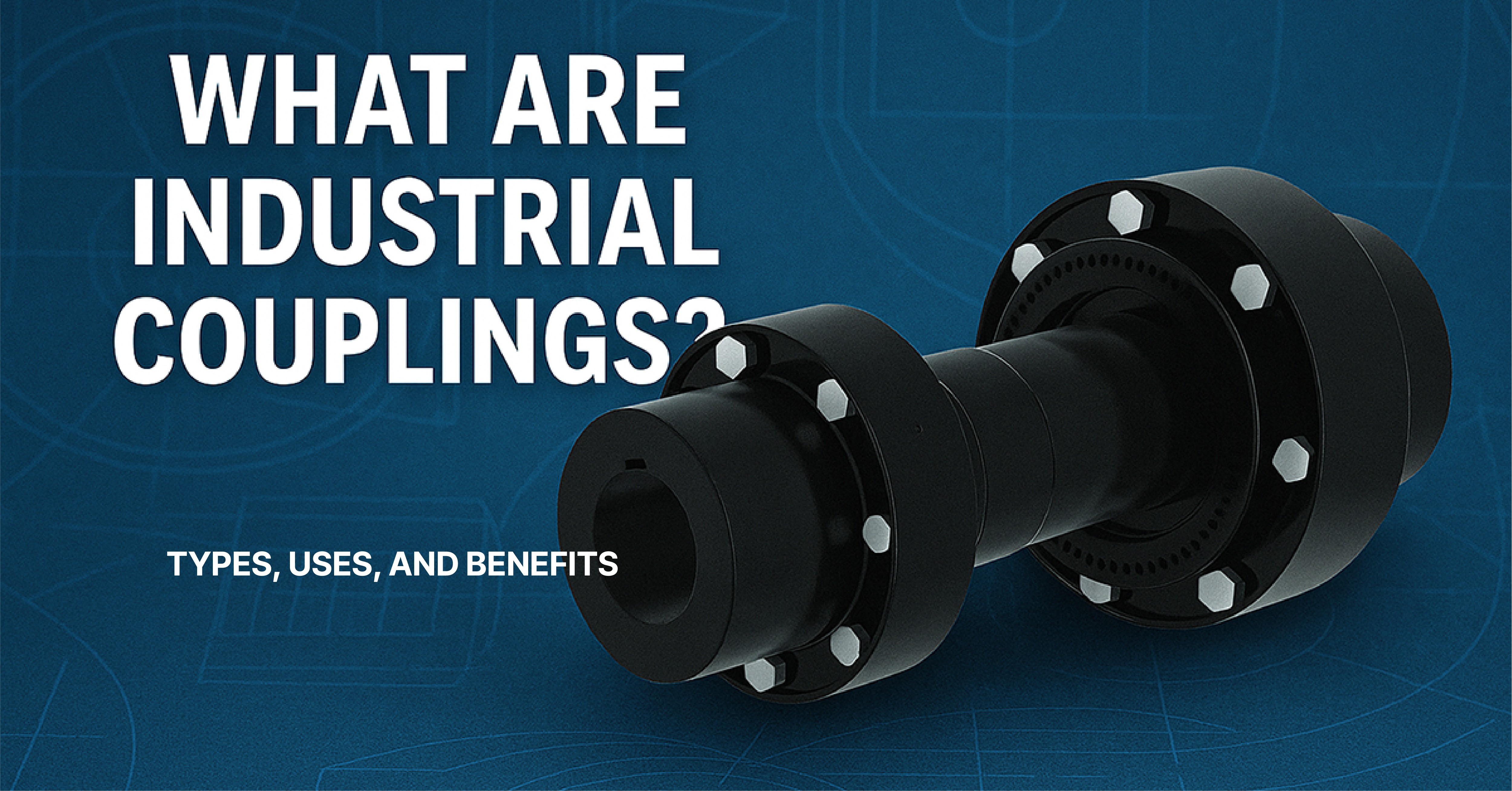What Are Industrial Couplings? Types, Uses, and Benefits

In the world of industrial machinery, every component—no matter how small—plays a vital role in ensuring smooth and efficient operations. One such essential component is the industrial coupling. Designed to connect two shafts and transfer power from one to another, couplings help manage misalignment, absorb vibrations, and enhance overall mechanical performance.
So, what is industrial coupling, and why is it a core component of many machines? In this comprehensive guide, we’ll explore the types, uses, and benefits of industrial couplings, along with insights into their applications across various industries.
What is an Industrial Coupling?
An industrial coupling is a mechanical device that joins two shafts at their ends to transmit power. These shafts may be aligned or misaligned, and the coupling compensates for these deviations while allowing for the transfer of torque.
The main purpose of a coupling is to ensure that machinery components such as motors, pumps, compressors, and generators can operate together as a single functional unit. In addition to transmitting power, couplings protect equipment from overload, vibration, and wear.
Types of Industrial Couplings
There are many types of industrial couplings, each designed to serve a specific purpose depending on operational demands such as torque, alignment tolerance, and environmental conditions.
Here are some of the most widely used coupling types:
1. Gear Coupling
Gear couplings are composed of toothed hubs and sleeves, which allow them to transmit high torque and handle angular misalignment. They are widely used in heavy-duty machinery such as rolling mills, steel plants, and large industrial mixers.
2. Disc Coupling
Disc couplings use one or more flexible metal discs to transfer torque while accommodating angular and axial misalignments. They are ideal for high-speed and precision equipment and do not require lubrication.
3. Pin Bush Coupling
Pin bush couplings use flexible bushes between pins to absorb shocks and accommodate minor misalignments. These are simple in design and are widely used in pumps, fans, compressors, and conveyors.
4. Jaw Coupling
Jaw couplings consist of two hubs and a spider (elastomeric insert) that provides damping of vibration and misalignment. They are popular in automation, packaging, and light-duty industrial machines.
5. Grid Coupling
These couplings use a metallic spring-like grid to connect two flanged hubs. They provide excellent shock absorption and are ideal for heavy machinery such as blowers, conveyors, and crushers.
6. Flexible Coupling
Flexible couplings can handle various degrees of misalignment and are used in general industrial applications. Their flexibility comes from elastomeric or metallic components that allow for torque transmission while protecting the equipment.
Coupling Uses in Industrial Applications
The uses of industrial couplings span across nearly every major industrial sector. Their ability to efficiently transmit torque while protecting mechanical systems makes them invaluable to modern engineering operations.
Here are some key applications of couplings in industry:
Manufacturing & Production Lines
Couplings connect motors to various mechanical parts like rollers, conveyors, and mixers. They ensure smooth operation, even in cases where precise alignment is not possible, reducing downtime and boosting productivity.
Power Generation
In power plants, couplings connect turbines to generators or pumps. Gear couplings and grid couplings are preferred for their ability to transmit high torque and withstand thermal expansion
Water & Waste Management
Pumps in water treatment facilities rely on pin bush and flexible couplings to absorb vibration and work efficiently in corrosive environments.
Automotive & Aerospace
Precision machinery such as testing rigs and automated assembly systems use disc couplings for zero-backlash performance and high torque accuracy.
Chemical & Pharmaceutical Plants
These industries require sterile and precise equipment. Couplings with non-lubricated and backlash-free performance, like disc couplings, are commonly used in mixers, centrifuges, and chemical reactors.
Construction & Mining
Couplings in this sector must endure dust, shock, and load variations. Gear and grid couplings are ideal for rugged applications like crushers, hoists, and heavy equipment.
Benefits of Industrial Couplings
The choice of a correct coupling system can significantly impact the longevity, efficiency, and safety of machinery. Here are some notable benefits of couplings:
Misalignment Handling
Couplings allow for angular, axial, and parallel misalignment between connected shafts, reducing wear and extending machinery lifespan.
Shock Absorption
They act as buffers by absorbing vibrations and torque fluctuations. This is crucial in minimizing stress on rotating machinery and protecting sensitive components.
Operational Safety
Couplings can be designed to fail in a controlled manner in the event of overload, protecting expensive machinery from catastrophic failure.
Ease of Maintenance
Many couplings are designed for quick installation and easy maintenance, helping reduce system downtime and operational costs.
Improved Efficiency
By ensuring smooth torque transmission, couplings help improve the overall energy efficiency of machines.
Versatility
Industrial couplings are available in various materials and designs, making them suitable for diverse operational conditions and applications.
Coupling Product Highlights
For those seeking high-quality industrial couplings, Formura offers a range of products built for reliability and performance. Their portfolio includes:
- Gear Couplings – High torque and rugged design for heavy industries
- Disc Couplings – Precision-driven, zero-backlash designs for critical machinery
- Pin Bush Couplings – Durable and simple couplings for a wide range of uses
- ESCO Couplings – Known for premium performance and global quality standards
Whether you are sourcing for new machinery or retrofitting existing systems, choosing the right coupling type is key to ensuring mechanical harmony and efficient performance.
Conclusion
In the ever-evolving landscape of industrial machinery, industrial couplings stand out as a core component enabling safe, efficient, and flexible operation. From accommodating shaft misalignment to transmitting torque and absorbing shock, couplings play a multifaceted role in virtually every sector of industry.
Understanding the different types of industrial couplings—be it gear coupling, disc coupling, or pin bush coupling—can help ensure the right fit for the right job. When sourced from reliable coupling product retailers and sellers, these components not only improve system reliability but also reduce long-term maintenance costs.
Explore the right coupling solution for your industrial setup and experience the difference in performance, durability, and efficiency.